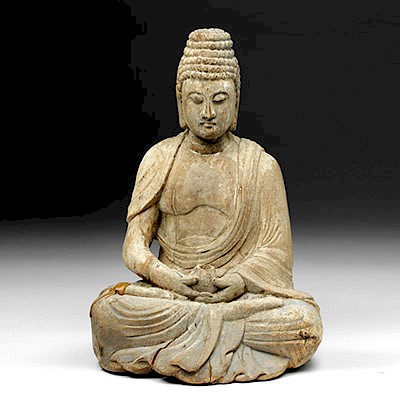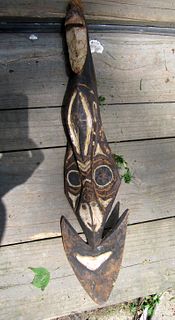Large South Arabian Qatabanian Alabaster Lidded Jar
Lot 86
About Seller
Artemis Fine Arts
686 S Taylor Ave, Ste 106
Louisville, CO 80027
United States
Selling antiquities, ancient and ethnographic art online since 1993, Artemis Gallery specializes in Classical Antiquities (Egyptian, Greek, Roman, Near Eastern), Asian, Pre-Columbian, African / Tribal / Oceanographic art. Our extensive inventory includes pottery, stone, metal, wood, glass and textil...Read more
Estimate:
$2,000 - $3,000
Absentee vs Live bid
Two ways to bid:
- Leave a max absentee bid and the platform will bid on your behalf up to your maximum bid during the live auction.
- Bid live during the auction and your bids will be submitted real-time to the auctioneer.
Bid Increments
| Price | Bid Increment |
|---|---|
| $0 | $25 |
| $300 | $50 |
| $1,000 | $100 |
| $2,000 | $250 |
| $5,000 | $500 |
| $10,000 | $1,000 |
| $20,000 | $2,500 |
| $50,000 | $5,000 |
| $100,000 | $10,000 |
| $200,000 | $20,000 |
About Auction
By Artemis Fine Arts
Jun 7, 2018
Set Reminder
2018-06-07 09:00:00
2018-06-07 09:00:00
America/New_York
Bidsquare
Bidsquare : Clearance Sale - Ancient / Ethnographic Art
https://www.bidsquare.com/auctions/artemis-gallery/clearance-sale---ancient-ethnographic-art-3264
Looking for a bargain on authentic ancient and ethnographic art? These lots are going, going, gone! Artemis Fine Arts info@artemisfinearts.com
Looking for a bargain on authentic ancient and ethnographic art? These lots are going, going, gone! Artemis Fine Arts info@artemisfinearts.com
- Lot Description
Middle East, South Arabia, Qatabanian culture, ca. 3rd century BCE to 1st century CE. A huge alabaster jar, hollowed out internally about halfway down its body, with two zoomorphic or possibly mask-like handles and a fitted lid with a zoomorphic, possibly equine form as its handle. Similar examples have stylized bull heads. The body of the jar is bell-shaped, with a flat base; the artist or artists who created this piece took into account its gorgeous banded surface, with white, grey, red, and brown hues. The handles and the underside of the lid have very small drilled perforations. Size: 5.25" W x 7" H (13.3 cm x 17.8 cm)
Beehive vessels like this one have been found at several sites throughout Arabia, with most coming from Yemen, although they have been found as far afield as Bahrain. These vessels were made to hold oily unguents, frankincense, and myrrh. As a result, they are often found along trade routes, like the Nabataean route in the Negev.
A smaller example sold at Bonhams, London, for approximately $1700 in 2012: http://www.bonhams.com/auctions/19961/lot/167/
Provenance: private East Coast, USA collection
All items legal to buy/sell under U.S. Statute covering cultural patrimony Code 2600, CHAPTER 14, and are guaranteed to be as described or your money back.
A Certificate of Authenticity will accompany all winning bids.
We ship worldwide and handle all shipping in-house for your convenience.
#127667Vessel itself has wear on surface and small loss from base (although it stands very well on its own). Lid has loss on one side of the rim and wear on surface.Condition
- Shipping Info
-
All shipping is handled in-house for your convenience. Your invoice from Artemis Gallery will include shipping calculation instructions. If in doubt, please inquire BEFORE bidding for estimated shipping costs for individual items.
-
- Buyer's Premium



 EUR
EUR CAD
CAD AUD
AUD GBP
GBP MXN
MXN HKD
HKD CNY
CNY MYR
MYR SEK
SEK SGD
SGD CHF
CHF THB
THB

















